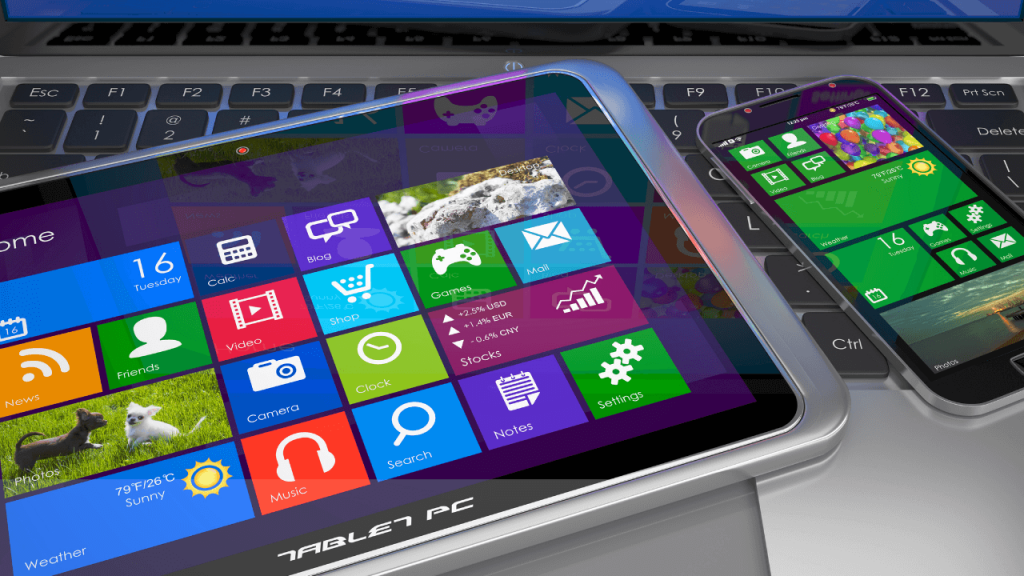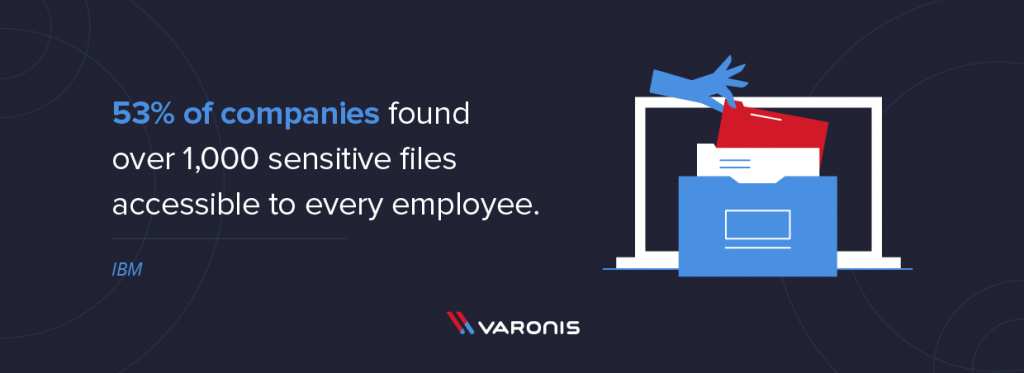Last Updated on August 4, 2022

- #1 Sticking With Legacy Devices
- #2 Not Conducting App Testing Before Installing Them
- #3 Not Anticipating Device Updates
- #4 Not Updating Mobile OS
- #5 Not Listening To Users
- #6 Develop A Bring Your Own Device Protocol
- #7 Not Creating A Clear Corporate Mobile Device Policy
- #8 Poorly Planned Deployment
- #9 No Training Program Was Used
- #10 Failure To Consider Usability Vs. Safety
- #11 Employees Rooting Or Jailbreaking Their Mobile Devices
- #12 Not Constantly Updating
- #13 Rough Migration
- #14 More Devices, More Security Issues
- #15 Network Access Control
The larger a company becomes the more cell phones, tablets, and laptops they need to provide for their employees. When the number of employees is low, ensuring that mobile devices are up to date with the necessary software and safety protocol is not difficult and can be done with ease. However, when the number of employees is high, it can be difficult to implement all the necessary updates effectively. Aside from logistical difficulty, trying to do so manually consumes a significant amount of time, time which employees could be spending doing more productive things.
This is where mobile device management, or MDM comes into play. With MDM solution, businesses can use third-party software to ensure all devices are up to date with the latest safety protocols and software updates. While this is extremely convenient, there are a number of mistakes and pitfalls organizations may run into when using MDM. Here are 10 mobile device management mistakes to avoid.
#1 Sticking With Legacy Devices
With new devices coming out every year or two, it can be very tempting to stick with your legacy devices to save money. Unfortunately, older devices might begin to impose compatibility issues which won’t allow them to work properly with certain MDM software.
Often, it isn’t the device’s hardware capabilities that fails you, but rather the manufacturer. It is common for manufacturers to release updates that no longer support older devices, even if the devices themselves would have no issue running them.
Moreover, there may be a point during legacy device usage where some of the hardware becomes too outdated to run certain programs effectively. When this occurs, the organization will have no choice other than to purchase an entirely new set of mobile devices, which can prove costly.
#2 Not Conducting App Testing Before Installing Them

As anyone who has worked in software development will know, testing is one of the most important, and most stressful stages of the development cycle. It is during testing that a team really gets to see how their system works in a real life setting, and, as many can attest to, sometimes it goes well and sometimes it goes very poorly.
Unfortunately, in the standard waterfall development cycle, testing is usually left towards the end, when most of the development budget has already been eaten up. As a result, most software products do not receive the amount of testing they require before being shipped out, and this holds true for in-house software as well.
If a business or organization produces a piece of software that is then installed on every mobile device using the MDM system, it can be dangerous if the software in question has some major bugs. Aside from bugs that make it difficult to use an application, any applications added to the ‘safe list’ on an MDM must be tested for safety issues. It has happened more than once where a company has invested good money in an MDM system only to find out one of their in-house applications was responsible for a data breach.
#3 Not Anticipating Device Updates
When it comes to mobile devices, new firmware updates are constantly being released. While some are minor updates that mostly consist of changes to the UI, some are major overhauls of the operating system that can have a major impact on how the device operates.
As some may have guessed, these updates can affect how certain applications run on different devices. In some cases, they may leave them in a state where they don’t run at all or are tremendously glitchy. If a business has several mobile devices with proprietary software installed on them, then they should ensure that the MDM blocks the automatic installation of firmware updates. By doing this, it will give developers and IT techs a chance to see what effects an update has on their software before it is installed on every device.
#4 Not Updating Mobile OS
On the flip side of the coin, some organizations don’t want to deal with the headache of dealing with possible compatibility issues due to firmware updates. To safeguard themselves from these potential issues, they decide not to update at all. While this may work for a while, eventually, basic applications on the mobile devices will begin to become incompatible with the old firmware. On top of this, leaving mobile devices without their latest update can lead to security issues.
#5 Not Listening To Users
MDM systems may limit certain device functionality, which can be annoying and frustrating to the end-users. As is always the case, whether it be with MDM software or any other application, one must always think about how employees will interact with it and how it will affect their production.
On paper, it’s easy to justify the use of a particular application or piece of software. However, it’s important to go justify it’s in a real-life setting as well.
#6 Develop A Bring Your Own Device Protocol
It is common for people to use their own laptops, tablets, and even mobile phones in the world place. Although this can save a company a substantial amount of money, they need to have a BYOD security policy in place that dictates what networks these private devices can access.
Aside from this, personal devices are also hotbeds for malware, malware which can easily infect a system or cause a data breach. Because of this, organizations need to think carefully about which devices they allow onto their MDM network.
It should be understood that developing a set of rules governing what people can and cannot access with their personal devices is only useful if it is enforced. Far too often, businesses have become lax on these rules and seen their network infected with malware. This issue can be made even worse if the infected device was connected to the MDM network, as the possibility to infect more than one device increases greatly.
#7 Not Creating A Clear Corporate Mobile Device Policy
An MDM system allows businesses to enforce certain types of behaviors and functionalities when it comes to mobile devices. By doing this, it helps keep employees on task, data and networks secure, as well as control certain aspects of device/app use.
That being said, organizations need to develop a clear and detailed policy about what devices employees can use, which devices can access certain networks, and which applications employees are allowed to have on company devices. The effectiveness of an MDM system depends largely on the amount of planning that one puts into it.

#8 Poorly Planned Deployment
When they are working well, MDM systems can be a blessing. However, when they are not working as planned, it can be an IT nightmare. More often than not, what creates issues when using deploying an MDM is lack of planning. Whether it be poor compatibility issues, or a misunderstanding of certain functionalities, most problems arise because the MDM was put into service before proper planning was conducted.
When this occurs, it can create a major problem for businesses. Employees may not be able to use their devices properly, which can impact their productivity.
#9 No Training Program Was Used
Another major oversight that happens with MDM deployment is that management does not take enough time to train employees. For the most part, MDM systems are not difficult to navigate, and more often than not, what causes issues is the lack of understanding of the limitations that the MDM has put on certain employees and their ability to access certain data works or databases.
#10 Failure To Consider Usability Vs. Safety
Almost all leading MDM systems enforce the use of passwords and employee verification in an effort to protect organizations from data theft and other potentially damaging situations. However, these added safety measures decrease usability and add extra time to many different processes, bringing up the classic usability vs. safety debate.
A study done by Verizon mobile found that 48% of professionals were willing to sacrifice mobile security if it meant they gained more productivity to meet their business goals. This number is interesting because the same study also concluded that 40% of the people interviewed believed that mobile devices present the largest security risk to their company.
When deploying a MDM system, it is crucial to consider how added security measures will impact device usability and ultimately employee performance.
#11 Employees Rooting Or Jailbreaking Their Mobile Devices
Simply put, many employees do not like MDM systems and the way it affects the usability of their devices. Furthermore, some MDMs wont let employees install certain applications that are known to be vulnerable or steal data. While most employees will be good sports about this, some will inevitably try to circumvent this by rooting or jailbreaking their device in an attempt to regain full access once again.
When this is done, it can introduce bad elements to a closed system and result in the very issues that the MDM deployment was trying to prevent. Should this occur, it is recommended that the company have strict consequences for these actions, as they can seriously jeopardize the safety of sensitive data. That’s why most companies would apply kiosk mode to hide certain apps from showing on the distributed devices.
#12 Not Constantly Updating
Software is not static, nor was it made to be. Whether it be a simple application, a database protocol, or an entire OS, software systems are constantly receiving updates and being changed to fix bugs and create solutions to new problems. As a result, MDMs must be dynamic as well and undergo constant updates. This is one of the areas of MDM management that organizations like the least, and part of the reason why so many businesses have issues with MDM deployment.
#13 Rough Migration
At some point, a business or organization may want to change their MDM solution. This could come as the result of many things, perhaps the company wants to save some money or they are not happy with their current MDM solution. Regardless of the reason, this scenario happens quite often, and when a new product is found, requires the migration from one system to another.
The unfortunate part of this process is that migration comes with its own set of issues, some of which are hard to avoid. Aside from compatibility issues (which are very common), there may also be a steep learning curve that employees have to go through before they feel comfortable using the new system. Although this is normal and an unavoidable part of the process, it can have a strong impact on employees ability to produce at their normal rate, something every business should be prepared for when deciding to switch from the MDM to another.
#14 More Devices, More Security Issues
There is no way around it, the more mobile devices you introduce into your business, the more entry points hackers and other nefarious agents have to access. In fact, many experts believe that mobile device security is the fastest-growing cybersecurity category of 2021.
#15 Network Access Control
One issue businesses are facing when it comes to MDM is the rise of the digital workspace. During the covid19 pandemic, many people have been working from home, often from their own devices. This has created a whole new set of challenges for corporations as they seek to balance the need for security with the need to continue working. Of all these issues, network access control has been made even more challenging.
READ MORE 4 Crucial Questions to Ask When Choosing an MDM Solution
Mobile device managers have helped thousands of businesses better manage their mobile devices and secure their sensitive data, and when used correctly, most have little to no issues. However, as we have seen, MDMs can also cause a number of dangerous and production killing scenarios which can create and greatly disrupt business activities. Because of this, it is highly recommended that anyone thinking about installing a MDM take the necessary time to plan to system out, ensuring there are no compatibility and usability issues.

Author Bio
Lauren Groff is a professional business writer at UKWritings. Aside from writing, Lauren also acts as a consultant for companies who are looking for ways to improve their mobile device usage in the workplace.